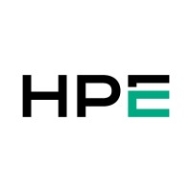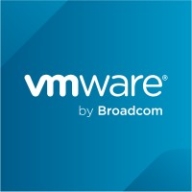

HPE SimpliVity and VMware vSAN are competitors in the hyper-converged infrastructure market. HPE SimpliVity offers simplicity and a comprehensive package, whereas VMware vSAN is recognized for its integration with VMware vSphere and performance optimization in hybrid and all-flash setups.
Features: HPE SimpliVity is known for easy management, built-in backup capabilities, and scalability, making it ideal for small companies with limited IT resources. Its data compression and deduplication efficiency is highlighted by users. VMware vSAN provides seamless integration with VMware vSphere, flexibility across environments, incremental scaling, and robust data optimization features like erasure coding, beneficial for cloud-based applications.
Room for Improvement: HPE SimpliVity could enhance flexibility for Hyper-V, simplify configuration, and offer more hardware options. Users suggest VMware vSAN enhance deduplication for hybrid setups, integrate more with backup solutions, and improve cost-effectiveness for entry-level setups.
Ease of Deployment and Customer Service: HPE SimpliVity is praised for straightforward deployment and strong technical support. VMware vSAN is easier for those familiar with VMware tools and is considered well integrated with its environments, though its cost can be higher for enterprise customers due to licensing.
Pricing and ROI: HPE SimpliVity offers good value despite perceptions of its high cost, with savings on backup solutions due to integrated features. VMware vSAN's pricing is complex and higher but can be justified by integration and scaling benefits in VMware-centric environments. Both products are seen as long-term investments, where vSAN focuses on integration cost savings and SimpliVity provides value through simplified management and comprehensive features.
I have seen a return on investment; it's satisfactory in the long run.
Starting with a smaller infrastructure and scaling as required allows us to save costs initially.
The technical support from the HPE side is excellent, and I give them 10 out of 10.
I would rate technical support from HPE SimpliVity eight out of ten.
I would rate their support nine points.
Sometimes the issue is that you don't get the best experience, whether it's the response time or first-level support quality.
I am not satisfied with VMware support, particularly with the reaction times, SLAs, and those kinds of issues.
With HPE, customers can scale up the HPE SimpliVity solution anytime.
HPE SimpliVity is scalable, as it can be scaled in terms of addition of nodes.
It supports up to 64 nodes in a cluster, allowing us to add nodes and expand the cluster as needed.
From HPE's side, it is stable, and customers find it easy to manage and easy to grow.
In terms of stability, I give VMware vSAN nine points.
In the future, if HPE integrates HPE SimpliVity with VM essential, that will be a great combination.
Pricing could be an area for improvement, as there are many other options that are very cost-effective compared to HPE SimpliVity or converged solutions.
A proper monitoring tool that encompasses both applications and infrastructure would help in quickly resolving issues.
Maybe incorporation of automation to build clusters in a more automated way would be beneficial.
VMware is costing significantly more nowadays compared to other solutions in the market.
This has resulted in a slight cost increase.
The greatest benefit is that customers don't need multiple hardware solutions from other vendors. Virtualization comes in a single box.
The data efficiency capabilities in HPE SimpliVity are impressive, as it is capable of storing data in its converged infrastructure with good resiliency and future expandability.
Hot add features are available by default in vSphere, allowing us to immediately increase memory, CPU, and hard drive without any downtime.
The VMware vSAN feature that has had the greatest impact on operational efficiency is the basic software-defined storage functionality.
A one-stack solution from one vendor is the main benefit here.
| Product | Market Share (%) |
|---|---|
| VMware vSAN | 13.0% |
| HPE SimpliVity | 8.6% |
| Other | 78.4% |


| Company Size | Count |
|---|---|
| Small Business | 68 |
| Midsize Enterprise | 49 |
| Large Enterprise | 79 |
| Company Size | Count |
|---|---|
| Small Business | 98 |
| Midsize Enterprise | 58 |
| Large Enterprise | 128 |
HPE SimpliVity is an HCI software solution that provides powerful data protection, reducing data loss along with lowering the risk of ransomware attacks on your enterprise.
HPE SimpliVity Features
HPE SimpliVity has many valuable key features. Some of the most useful ones include:
HPE SimpliVity Benefits
There are several benefits to implementing HPE SimpliVity. Some of the biggest advantages the solution offers include:
Reviews from Real Users
Below are some reviews and helpful feedback written by HPE SimpliVity users.
Jeff S., Information Technology Manager at Troyer Foods, Inc. says the solution has “Phenomenal deduplication and compression, good support, and works on its own. SimpliVity is integrated with the hypervisor, and you have a single pane of glass. It is really hands-off. Once you set your backup schedules, you're done.
A Senior Datacenter Consultant at a computer software company mentions, “The most valuable feature is the ease of use and the storage virtualization layer, together with the built-in backups. That's what makes SimpliVity really useful, and how you can replicate data between different sites without paying an extra license for that feature. All the features are built into the product.”
PeerSpot user Doug C., IT Engineer at a government, comments, “Backups and restores occur very quickly. All SimpliVity management is done through vCenter, providing a single-pane of glass for all management and configuration functions. The advanced deduplication and compression greatly reduce the storage requirements, reducing the amount of expensive flash storage required.The 10G interfaces between the SimpliVity nodes greatly speeds up VM migrations between nodes. SimpliVity enables "stretched-cluster" operation with mirrored storage between the nodes, enabling automated failover. If a node or site goes down for any reason, the VMs on that node are automatically restarted on the other node.”
German I., Solutions Architect Data Center Servers and Storage at Tecnologia informatica, explains, “The integration possibilities regarding the administration console are one of the best configurations and one of the best features that differentiates this product from others in the market. Also, you can add extra coverage protection that includes everything inside of the hard drives — similar products don't do this. You can use it directly from the hypervisor, which is great.”
VMware vSAN is a software-defined storage product that is used in collaboration with VMware ESXi hypervisor and that provisions and manages storage based on policies, regardless of the underlying hardware. The solution enables you to prime your business for growth through its seamless evolution (it is integrated with vSphere and requires no new tools), its flexibility, and its multi-cloud capabilities. As an industry-leading software, VMware vSAN provides high levels of performance with minimal impact on CPU and memory.
VMware vSAN Features
VMware vSAN has many valuable key features. Some of the most useful ones include:
VMware vSAN Benefits
There are many benefits to implementing VMware vSAN. Some of the biggest advantages the solution offers include:
Reviews from Real Users
Below are some reviews and helpful feedback written by PeerSpot users currently using the VMware vSAN solution.
PeerSpot user Yves S., CEO, Cloud Evangelist at Comdivision Consulting GmbH, says, “vSAN gives us a lot of advantages when we need to expand resources. We have an overall larger host infrastructure, and we split that up for specific customer test and use cases. In that specific scenario, we can easily add more hosts or reduce the number of hosts in the environment.”
A reviewer who works in Infrastructure Security explains, “The ease of use is great. The initial setup and upgrade process was pretty straightforward. And, technical support is great.”
Laurent N., Director at Softlogic, comments, "The feature that I have found most valuable is that it is easy to deploy. It is easy to create and delete virtual servers. It is easy to create the load balancing and the clustering."
We monitor all HCI reviews to prevent fraudulent reviews and keep review quality high. We do not post reviews by company employees or direct competitors. We validate each review for authenticity via cross-reference with LinkedIn, and personal follow-up with the reviewer when necessary.